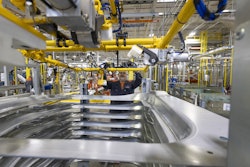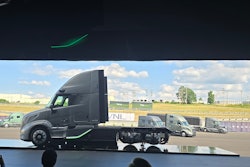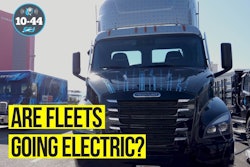As NACFE has so well coined the phrase, we are in the "messy middle", a time when there are many solutions to decarbonize trucking. They start with improving fuel economy of diesel-powered vehicles, to using low carbon fuels to battery electric vehicles (BEV) and fuel cell electric vehicles (FCEV).
In the BEV space, there is a lot of concern about the availability of critical minerals and resources and the ability to mine them, as well as process and manufacture batteries from those minerals. Something that is not discussed is the concern around heavy rare earth magnets. These magnets are in most BEV motors today.
Heavy rare earth magnets provide the most efficient motors, and motor efficiency is critical because the higher the efficiency, the longer the range of the vehicle. Given range anxiety concerns and the need to conserve energy, we need highly efficient motors in our BEVs.
Some examples of these heavy rare earth materials are neodymium, terbium and dysprosium. Interestingly, these materials are not really that rare; the problem is that they are not concentrated in any one area and, like batteries, have environmental and geopolitical issues. Nonetheless, if BEVs are to take off and we are to reach zero- emission trucking in the future, we need to solve this problem.
As we look into the future, we can study passenger cars to see how OEMs are developing motors and addressing these issues. Here are some of the approaches that are taking place.
Reduce the amount of heavy rare magnets
All manufactures are working to reduce the content of rare magnets. They are using AI tools to help them minimize the amount of rare earth minerals, finding the highest amount of force per unit of magnet weight. They have sophisticated tools that allow them to design the optimal geometry and grain structure to maximize the magnetic force.Use light rare earth magnets
Toyota and other manufacturers are reducing or eliminating neodymium and moving to light rare earth magnets, specifically, lanthanum and cerium. These materials are more available and are less expensive. Toyota believes they can reduce the amount of neodymium by 20% to 50%. Their solution consists of a mixture of the three materials and they will be launching the new motor on their passenger cars by 2025. It is fair to assume that other manufacturers in the commercial vehicle space will also be pursuing these concepts.Eliminate the use of magnets and optimize duty cycle
There are several other non-magnet-based motors in production today on BEVs. The issue is that they are inferior in terms of efficiency, and this degrades range. These motors are in the range of 3% to10% less efficient than that of magnet-based motors.Two examples are induction motor (IM), and the electrically excited motor. Instead of utilizing magnets, an electrical circuit is used to create a magnetic field. These motors are less efficient because energy is needed to create the magnetic field. Tesla cars have utilized a multi-motor strategy where one of the motors is an induction motor and the other uses magnets. More specifically, the magnet-based motor is used for most of the drive cycle, and the IM is used only in burst/acceleration mode.
While not knowing exactly what is used on the Semi, it is believed that they have taken a similar strategy as used in cars: one axle being the drive and the other being the axle for acceleration. It is likely that OEMs adopt these kinds of strategies where the more efficient motor is used for the primary driving and then a less critical motor is used for acceleration.
Recycling
As we think about a circular supply chain, we certainly need to pull the lever on recycling magnets. It is estimated that less than 1% of today’s magnets are recycled. There are estimates that recycling magnets have one-tenth to one-half the environmental impact of mining and refining new materials. Many universities and companies are working to improve the effectiveness of the recycling process. The biggest challenges are collection, logistics, sorting, achieving scale and cost. Europe is considering a regulation that would force collection of used batteries, thereby ensuring available feedstock.Full deployment of zero-emission vehicles is the end goal along the messy middle journey. As we transition, we must consider the complete environmental impact of all our powertrain alternatives. We must think “well to wheel” and full life cycle.
Finding electric motors that are not only efficient but also are comprised of materials that are abundant and those that don’t have bad environmental implications will be key in this journey.














